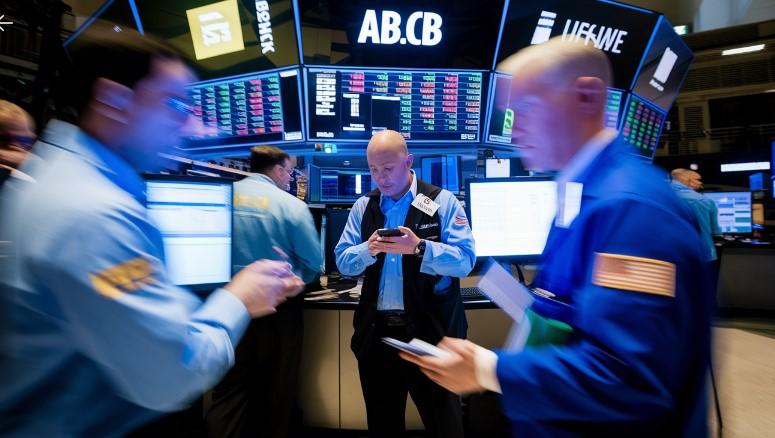Demystifying S&P 500 Futures vs. S&P Futures: What Traders Need to Know (And Why the Difference Matters)

If you’ve ever searched for S&P 500 futures or S&P futures, you may have assumed they’re the same thing.
But in the world of professional futures trading, the distinction between these terms is critical—affecting everything from contract size and tick value to liquidity, margin requirements, and risk exposure.
In this comprehensive guide, we’ll clarify the real-world differences between S&P 500 futures and what traders commonly refer to as S&P futures, explain which contracts are available, and help you choose the right one based on your account size, strategy, and experience level.
The Core Confusion: “S&P Futures” Is Not a Single Contract
When traders say “S&P futures,” they’re usually referring to one of three actual futures contracts tied to the S&P 500 Index. But each has different specifications, trading hours, and target audiences.
Let’s break down the three main contracts:
|
|
|
|
|
|
|
|---|---|---|---|---|---|
|
ES
|
E-mini S&P 500 Futures
|
ES
|
$12.50
|
$50
|
Retail & institutional traders
|
|
SP
|
Big S&P 500 Futures
|
SP
|
$250
|
$250
|
Institutional traders only
|
|
MES
|
Micro E-mini S&P 500 Futures
|
MES
|
$1.25
|
$5
|
Beginners, small accounts
|
Despite all tracking the same index, these contracts are not interchangeable.
1. ES – The E-mini S&P 500 Futures (Most Popular)
The ES contract is the most traded equity index futures contract in the world—and for good reason.
Key Features:
- Contract Size: 50 x S&P 500 Index value
→ At 5,500 index level = $275,000 notional value - Tick Size: 0.25 index points = $12.50 per tick
- Trading Hours: 23 hours/day (CME Globex), 6:00 PM – 5:00 PM ET
- Margin Requirement: ~$12,000–$15,000 (varies by broker)
Why Traders Love ES:
- High liquidity = tight spreads
- Low slippage even during news
- Supported by all major futures trading platforms
- Ideal for scalping, day trading, and swing trading
💡 Fun Fact: Over 3 million ES contracts trade daily—more than all other U.S. equity futures combined.
2. SP – The Original “Big” S&P 500 Futures (Institutional Only)
The SP contract is the original S&P 500 futures contract, launched in 1982.
But today, it’s rarely traded by retail traders.
Key Features:
- Contract Size: 250 x S&P 500 Index value
→ At 5,500 = $1.375 million notional value - Tick Size: 0.10 index points = $25 per tick
- Liquidity: Very low compared to ES
- Margin Requirement: $250,000+
Who Uses SP?
- Large hedge funds
- Pension funds
- Institutional block traders
For 99% of traders, SP is irrelevant—but it’s important to know it exists.
3. MES – Micro E-mini S&P 500 Futures (Beginner-Friendly)
The MES contract was introduced in 2019 to make S&P futures accessible to small accounts.
Key Features:
- Contract Size: 5 x S&P 500 Index value
→ At 5,500 = $27,500 notional value - Tick Size: 0.25 index points = $1.25 per tick
- Margin Requirement: ~$1,200–$1,800
- Same trading hours as ES
Why MES Is Perfect for Beginners:
- 1/10th the size of ES
- Lower risk per trade
- Same price action, same charts
- Great for learning without blowing up
✅ Pro Tip: Use MES to test your ES strategy with 90% less risk.
Common Misconceptions About S&P Futures
❌ “S&P futures are too expensive for small accounts.”
✅ Truth: With MES, you can trade S&P exposure for under $2,000 in margin.
❌ “ES and MES move differently.”
✅ Truth: They track the same index. MES is just a smaller version.
❌ “Only pros trade S&P futures.”
✅ Truth: Thousands of retail traders use MES and ES daily.
Which Should You Trade: ES, MES, or SP?
|
|
|
|---|---|
|
Beginner, small account (<$5K)
|
MES
|
|
Intermediate, $10K+ account
|
ES(start with 1 contract)
|
|
Scalper or algo trader
|
ES(liquidity matters)
|
|
Institutional trader
|
SPorES, depending on size
|
Final Thoughts
When people say “S&P futures”, they almost always mean ES or MES—not SP.
And when they say “S&P 500 futures”, they’re referring to the broader category that includes all three.
Understanding the difference isn’t just semantics.
It’s risk management.
Choose MES if you’re starting out.
Scale to ES as your account grows.
Avoid SP unless you’re managing millions.
Because in futures trading, the right contract size is just as important as the right strategy.
- Art
- Causes
- Crafts
- Dance
- Drinks
- Film
- Fitness
- Food
- Giochi
- Gardening
- Health
- Home
- Literature
- Music
- Networking
- Altre informazioni
- Party
- Religion
- Shopping
- Sports
- Theater
- Wellness


